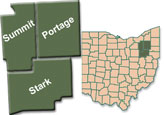| 8.0 | MAINTENANCE AND CONSTRUCTION MANAGEMENT |
| 8.1 | MAINTENANCE AND CONSTRUCTION OPERATIONS |
| 8.1.1 | Maintenance and Construction Operations shall provide a Maintenance Vehicle Fleet Management (MVFM) function to schedule and dispatch, monitor and track location, and monitor operational condition and maintenance requirements of public and contracted fleets of maintenance, construction, and specialized service vehicles. This function includes interactions among Traffic Managers, Supervisors, Dispatchers, Field Crews, Construction Crews, Vehicle Maintenance Crews, Equipment Maintenance Crews, Weather Services Organizations, and Information Service Providers. |
| 8.1.1.1 | MVFM shall be capable of monitoring and tracking the locations of public and contracted fleets of maintenance, construction, and specialized service vehicles to provide current location and status information. |
| 8.1.1.1.1 | MVFM shall be capable of monitoring and tracking the locations of fleets of maintenance, construction, and specialized service vehicles, including but not limited to: |
| 8.1.1.1.1(a) | Roadway maintenance trucks |
| 8.1.1.1.1(b) | Other motorized roadway maintenance equipment |
| 8.1.1.1.1(c) | Roadway construction trucks |
| 8.1.1.1.1(d) | Other motorized roadway construction equipment |
| 8.1.1.1.1(f) | Snow plows |
| 8.1.1.1.1(g) | Salt / sand trucks |
| 8.1.1.1.1(h) | Bucket trucks |
| 8.1.1.1.1(i) | Vegetation Control and Grass cutting equipment |
| 8.1.1.1.1(j) | Traffic control vehicles |
| 8.1.1.1.1(k) | Street and drainage cleaning vehicles |
| 8.1.1.1.2 | MVFM shall be capable of monitoring information regarding fleets of maintenance, construction, and specialized service vehicles, including but not limited to: |
| 8.1.1.1.2(a) | Location |
| 8.1.1.1.2(b) | Speed |
| 8.1.1.1.3 | MVFM shall be capable of tracking the past location and movement of maintenance, construction, and specialized vehicles. |
| 8.1.1.3 | MVFM shall be capable of supporting interactive data communications between dispatchers and operators of public and contracted maintenance, construction, and specialized service vehicles. |
| 8.1.1.3.1 | MVFM shall be capable of communicating information to vehicle operators, including but not limited to: |
| 8.1.1.3.1(a) | Routing information |
| 8.1.1.3.1(b) | Scheduling data |
| 8.1.1.3.1(c) | Dispatch instructions |
| 8.1.1.3.1(d) | Corrective actions |
| 8.1.1.3.1(e) | Environmental information (road and weather conditions) |
| 8.1.1.3.2 | MVFM shall be capable of communicating information from vehicle operators, including but not limited to: |
| 8.1.1.3.2(a) | Work data |
| 8.1.1.3.2(b) | Operator status |
| 8.1.1.3.2(c) | Crew status |
| 8.1.1.3.2(d) | Equipment status |
| 8.1.1.4 | MVFM shall be capable of using on-board vehicle sensors to monitor the vehicle diagnostics and operating conditions of public and contracted fleets of maintenance, construction, and specialized service vehicles. |
| 8.1.1.4.1 | MVFM shall be capable of collecting information on the operating conditions of vehicles, including but not limited to: |
| 8.1.1.4.1(a) | System status (e.g. status of brake system, oil pressure, etc.) |
| 8.1.1.4.1(b) | Engine temperature |
| 8.1.1.4.1(c) | Mileage |
| 8.1.1.4.1(d) | Tire wear |
| 8.1.1.4.1(e) | Brake wear |
| 8.1.1.4.1(f) | Belt wear |
| 8.1.1.5 | MVFM shall be capable of using on-board vehicle sensors to monitor roadway conditions and vehicle functions, including but not limited to: |
| 8.1.1.5(b) | Operating status (e.g. materials stored, materials usage, plow blade up/down, etc.) |
| 8.1.1.6 | MVFM shall be capable of providing dispatchers and operators of maintenance, construction, and specialized service vehicles with information regarding potential and actual roadway problems. |
| 8.1.1.6.1 | MVFM shall provide information to dispatchers and vehicle operators, including but not limited to: |
| 8.1.1.6.1(a) | Congestion |
| 8.1.1.6.1(b) | Incidents |
| 8.1.1.6.1(c) | Roadway restrictions |
| 8.1.1.6.1(d) | Environmental conditions |
| 8.1.1.6.5 | MVFM shall provide information to the vehicle operators concerning roadway problem spots and alternate routes because of potential or actual roadway problems. |
| 8.1.1.7 | MVFM shall be capable of communicating status information to other maintenance, construction or specialized service vehicles. |
| 8.1.2 | Maintenance and Construction Operations shall provide a Roadway Management (RWM) function to monitor traffic, road surface, and environmental conditions and forecast traffic and road surface conditions to support management of routine and hazardous road condition remediation and to communicate changes in conditions. This function includes interactions among Traffic Managers, Supervisors, Dispatchers, Field Crews, Construction Crews, Asset Managers, Planning Agencies, and Weather Services Organizations. |
| 8.1.2.1 | RWM shall support a number of different services, including but not limited to: |
| 8.1.2.1(a) | Winter maintenance (plowing, treating, anti-icing, de-icing, etc.) |
| 8.1.2.1(b) | Hazard removal (removing trash, animals, etc.) |
| 8.1.2.1(d) | Routine maintenance activities (cleaning, cutting, etc.) |
| 8.1.2.1(e) | Repair activities |
| | |














 Web Spinner Technology.
Web Spinner Technology.